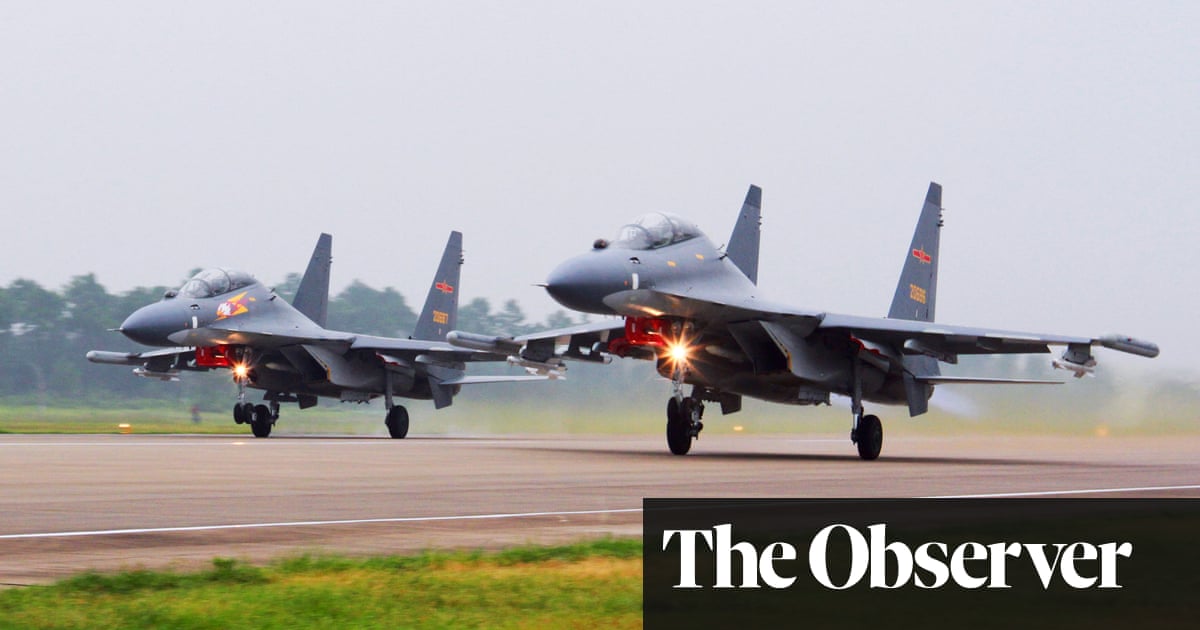
The Trump administration is about to sell $2.2 billion of top-of-the-line American military equipment — including 108 Abrams tanks, 250 Stinger missiles, Hercules armored vehicles and heavy equipment transporters — to Taiwan. Earlier in the year, the US also agreed to sell $500 million in F-16 parts and training. It is notable that this American sale to Taiwan is the first large-scale weapons sale to that country since 2011. And China is now threatening sanctions on US companies and moving aggressively in the maritime sea lanes around the island.
The timing is part of the larger picture of US-Chinese trade talks but also, more importantly, how China sees the sale in terms of the regional security picture. In addition, America’s “One China” policy is in the limelight.
To make matters even more tense, Taiwanese President Tsai Ing-wen visited the US last week, angering Beijing. Coinciding her visit with the arms sale announcement, the Taiwanese president met with significant support.
Coming from a 12-day tour of the Caribbean, Tsai’s transit in New York and Denver served to emphasize the Trump administration’s support for her at a time of increasing back and forth between Beijing and Washington. With Tsai running for re-election in January 2020, arming with top-line America equipment is to keep the island nation from any Chinese moves in 2021. Her opponent, Han Kuo-yu, is pro-Beijing. Already, Chinese military aircraft and ships are conducting maneuvers around Taiwan, testing defenses with probes. Beijing is not fooling around.
In January of this year, Chinese President Xi Jinping said Taiwan “must and will be” reunited with China; and he meant it. In a speech marking 40 years since Beijing’s call to end the military confrontation across the Taiwan Strait, Xi warned that China reserved the right to use force to bring about a reunification. The next day, Xi met with his Central Military Commission to prepare for armed conflict. In the current geostrategic environment in East Asia, such comments and actions are a further signal of what may be approaching in 2020 and 2021.
Already, Chinese military aircraft and ships are conducting maneuvers around Taiwan. Beijing is not fooling around.
Dr. Theodore Karasik
With just two years to go until the 100th anniversary of the founding of the Chinese Communist Party, and with the Taiwanese presidential election taking place in 2020, Beijing seeks to bring Taiwan back under the mainland’s umbrella through reunification. Such a plan is vehemently opposed by Taiwan itself, but also by the US, which has a robust defense relationship with Taipei. Trump also faces a presidential election in 2020 and the status of negotiations with North Korea will factor in Beijing’s calculations on Taiwan.
China is upset because of the age-old complaint of interference in its internal affairs under the One China rule. The Trump administration’s use of arms sales as part of the grander picture of trade talks is about guaranteeing the right of passage between mainland China and Taiwan. China could play the North Korean card by complicating the discussions between Pyongyang and Washington and mucking up progress. Yet Beijing knows that, should it do so, it would be responsible for North Korea"s nuclear program.
In reality, America’s arms sales to Taiwan will not dramatically change the military balance across the Taiwan Strait. Scenarios show that protecting Taiwan from attack would be a massive undertaking and difficult to achieve. Despite US help, China could overwhelm Taiwan very easily thanks to the 1,600 ballistic missiles it has pointed at the island. Taiwan also has an air defense problem because of its close proximity to the mainland. China’s fighter aircraft capabilities far outnumber and surpass those of Taiwan. In addition, the People’s Liberation Army (PLA) could be activated to pressure Taiwan, avoiding an all-out assault to invade the island by instead orchestrating a capitulation. The PLA Navy and Air Force would be used to blockade Taiwan, while Chinese artillery launched decapitation missile strikes against the Taiwanese leadership and other targets, such as airstrips, naval bases and radars.
In all those scenarios, Taiwan would be forced to adopt a purely defensive posture. It plans to inflict unacceptable pain on China with the production and deployment of land attack cruise missiles (LACM) and air-to-ground missiles capable of disabling airfields and missile and radar sites in China. The deployment and dispersal of larger quantities of road-mobile or naval LACM launchers by Taiwan would help suppress but not eliminate the hypothetical 2021 confrontation. Beijing knows how to play hybrid warfare with Taiwan by various means, including a growing social media campaign. Recent events in Hong Kong are also going to be a factor, as they will make China much more aggressive.
Overall, Taiwan’s location and its economy are a key part of the US’ interests in East Asia. If Taiwan were to be absorbed into China, Beijing would control the Eastern Pacific along with Russia, allowing both to close sea lanes and harass shipping up to and including energy supplies to Japan or South Korea. The challenge to the US’ One China policy is clear, as Beijing is employing a gradual escalation policy of coercion and pressure. The Trump administration is showing that it will support Taipei as part of its wider East Asia policy. The latest arms sale is just one part of a larger security situation that will continue to play out over the next two years.












